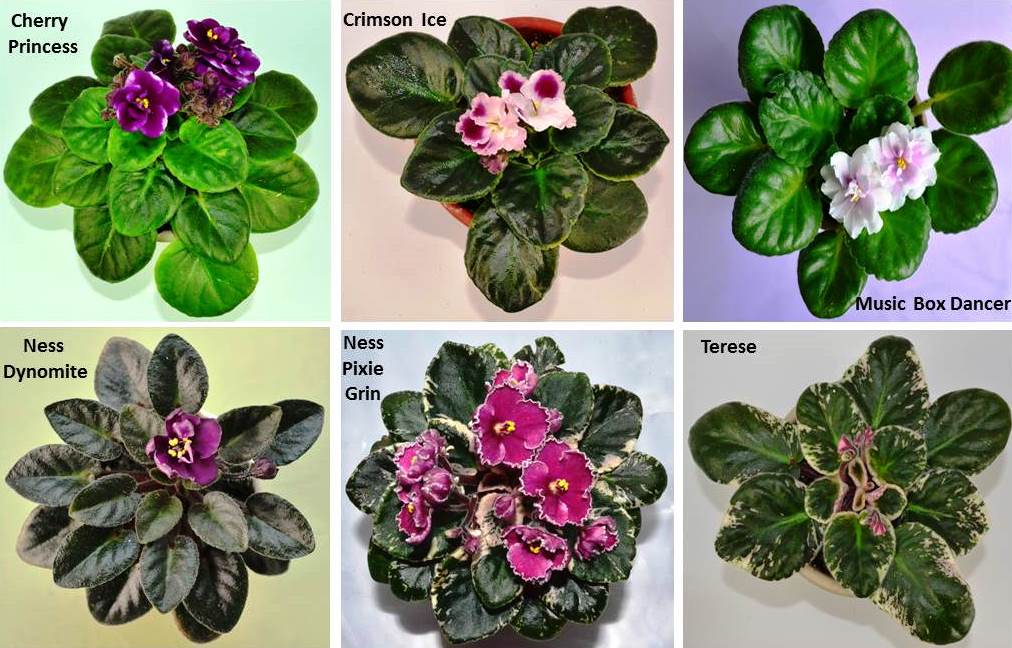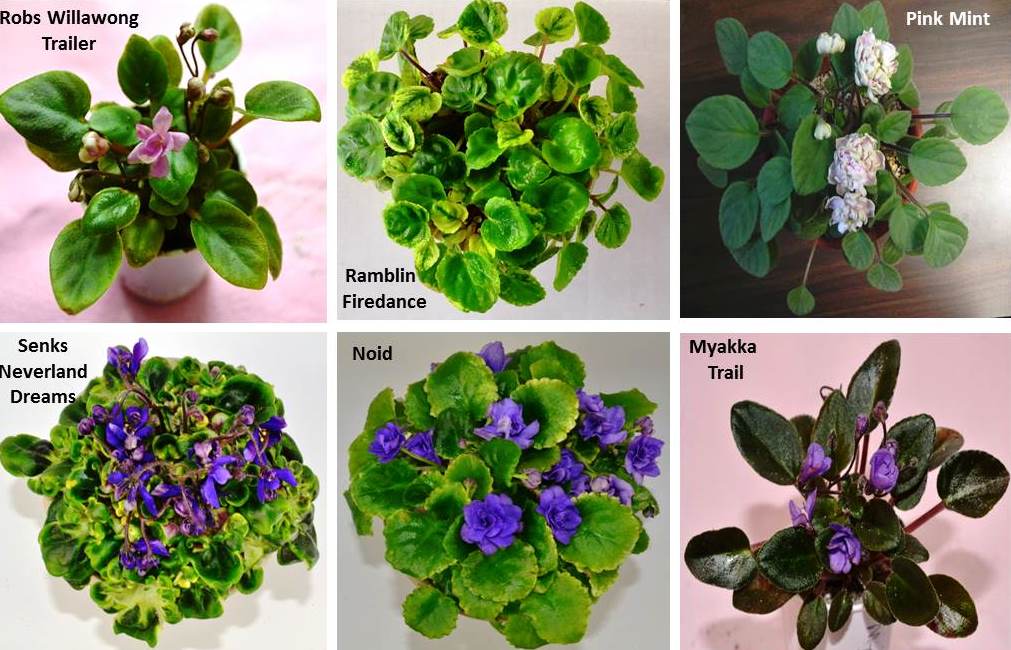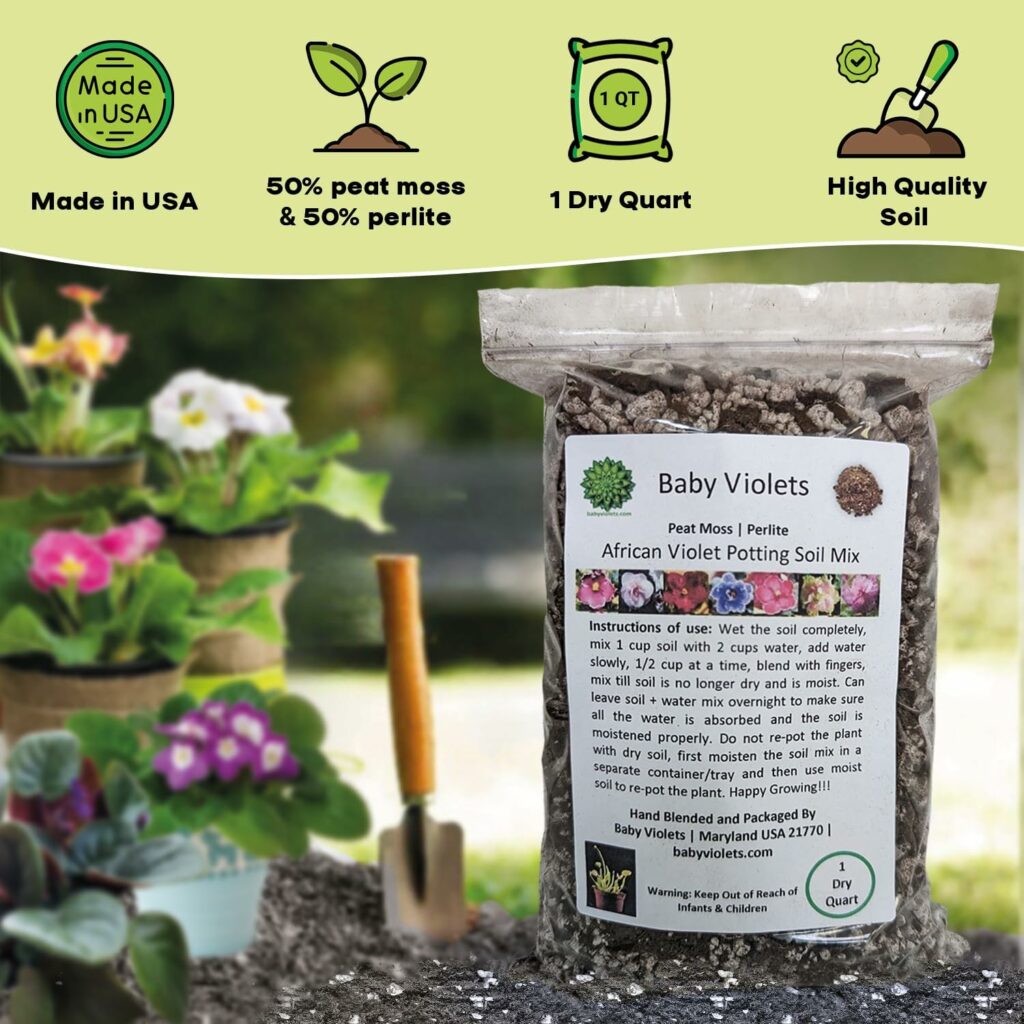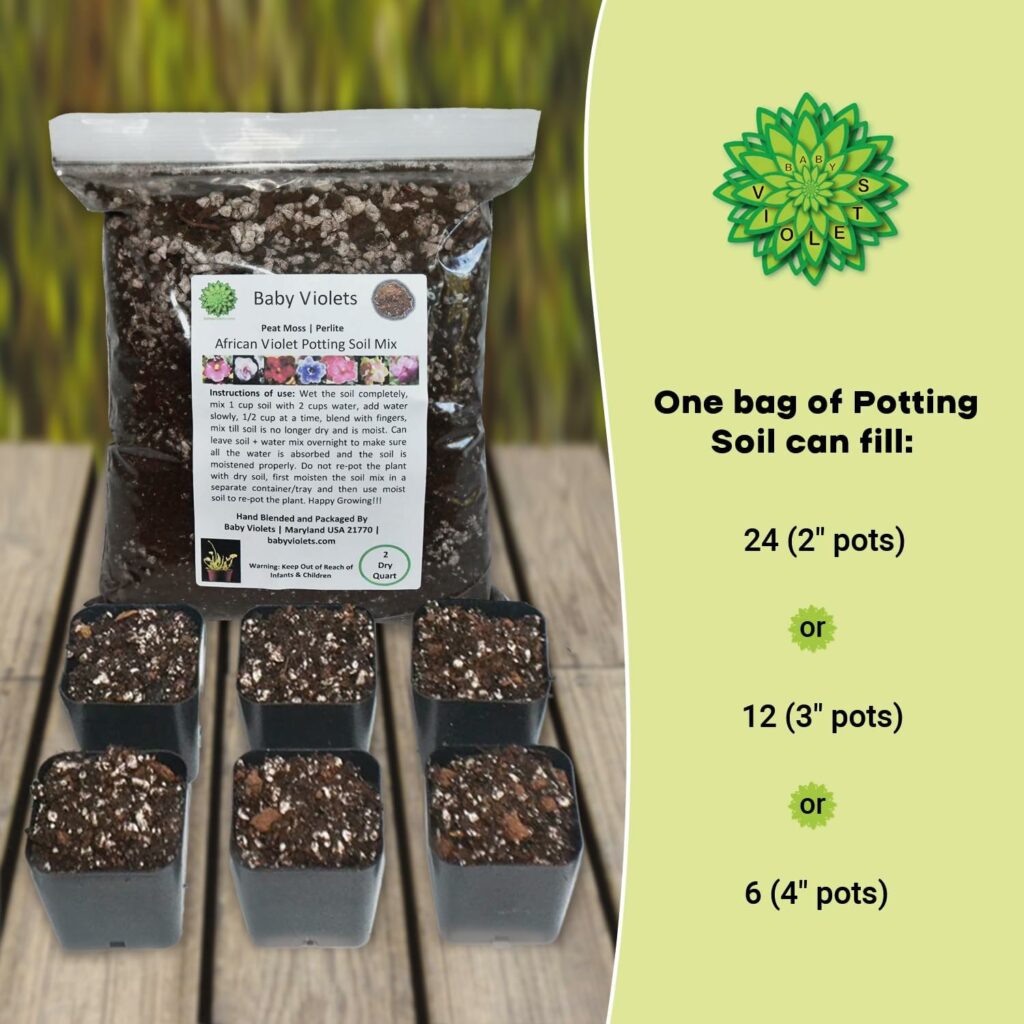Menu
What are the Different Types of African Violet Plants?
African Violets can be divided in two main categories depending upon their type:
Rosette African violet plants and trailing African violet plants.
They are defined as below:
Rosette African Violets:
- These plants have leaves which grow outwards from the center stalk in a layered radial/circular pattern.
- They grow as a single crown (thick stem) plant.
- The rosette plants main stem/stalk and its internodes are short in size.
- The leaves of the rosette plant grow closer to the soils surface.
- A single rosette plant can have as many as five symmetrical whorls of leaves tightly clustered at the base of the plant.
- The blooms grow within the center of the rosette.

African Violet and other potting mixes shown below, also my favorite African Violet fertilizer, optimara.
Trailing African Violets:
- These plants have multiple stems growing from the same plant roots and are known as multi-crown plants.
- Each stem has leaves which are in long in size and which also grow symmetrically in a radial/circular pattern. Since these stems are not strong enough to grow upright, they grow semi-vertically.
- Often trailing African violets look as if they are growing sideways with cascading growth.
- This growth pattern gives the plant it’s trailing /crawling / spreading characteristic.
- The main stem and intermodal space of trailing African violets are longer in size.
- Depending upon the size of the leaf, trailing violets can be miniature, semi-miniature or standard in size.
- The blooms grow all around the plant from each crown, giving it a mini bonsai (bush) like look.
- The first trailing violet was hybridized in 1954 and was known as “Wild Girl”.


*Our Affiliate Programs: We are a participant in the Amazon Services LLC Associates Program, an affiliate advertising program designed to provide a means for us to earn fees by linking to Amazon.com and affiliated sites.
Though we do link to many items on Amazon out of convenience to our readers, we do also participate in other affiliate programs that also pay us a commission for any purchases you might make through our links (at no additional cost to you!).
Like this article?
Share on Facebook
Share on Twitter
Share on Linkdin
Share on Pinterest






21 Responses
Your website is very nice, i have bookmarked it.
My Krystal African Violet is developing plant lets on its flower stalks. Do you have any idea what l should do?
Hello, thank you for your question. I have not heard of tiny plantlets, developing on flower stalks. They may be tiny leaves. Usually, a pair of tiny leaves do appear on flower stalks of certain plants, and that is normal. If its a tiny plantlet, will 6-8 leaves in 2-3 rows, it may be a sucker developing at the base of the flower stalk, in between a pair of leaves. You would have to groom your violet and remove the tiny suckers. Regards, BV
All you need to do for those little suckers (or plantlets) is to break them off or cut them off and pot them. If you have little plants growing from the stem of the parent plant that indicates that you need to repot the parent plant so that it isn’t so leggy.
I started a rosette violet from a single leaf.
It has never bloomed. I am concerned it has a cluster of tiny leaves growing in a circular pattern on the top. Sometimes that area has a brownish
Colour. Do I remove this? I recently repotted it to put some distance between the plant and the soil.
Thanks love your site!
Hello Carol,
I wouldnt remove the center/ crown of your plant, that is where the new leaves outgrow from. Do not water the plants for some time, it may be overwatered, so the leaves are turning brown. Keep an eye on it, if it doesnt recover or change color in a few weeks, you may have crown rot. Then the plant cannot survive and will need to be discarded. regards, BV
Do you have a catalog you could send me.
Thanks
Sandra Terry
Hello, I sell my African Violet plants on eBay, can check here, http://www.ebay.com/usr/baby-violet-plants. I am currently working on creating an online catalog of available plants on my website, so its easier to shop on my website, instead of eBay. Thanks, BV
my violet has giant flowers and now the leaves are getting ragged, almost like something is eating them. I have been unable to find a photo of my violet anywhere.
I inherited 3 mini violets in mini glass wick pots. 2
variety are the same the other one died. My survivors have light green leaves . I have had these about 3 months, and they have yet to flower. Any suggestions? I use one drop of super thrive fertilizer when I water.
Hello, thank you for your question. I am not sure about thrive fertilizer. My plants are also wicked in glass canning jars. I add optimara fertilizer, https://amzn.to/3oXUvCB, I usually see buds within 2-3 weeks. I add 1/2 tsp powder in half a gallon of water, mix it by swirling the water around in the jug, then re-fill the empty jars with this water. Hope this helps, regards, BV
I purchased 2 violets from Baby Violets. They are my favorites ( of many). Edge of Night and Frosty Cherry are absolutely beautiful.
Thank you Elaine for the feedback, really appreciate it. Glad to hear the plants are doing well. regards,BV
I was gifted a huge pot with AF’s recently. It has 3 purple blooming mother plants with green healthy leaves. It also have PINK LEAVES that look healthy not mushy at all. Wh I ch leaves should I try to propagate?
Hello,
I would use the green healthy leaves for propagation.
regards,
BV